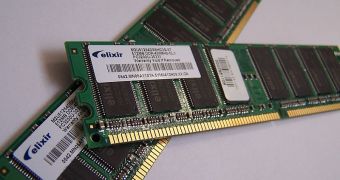A patent application is currently pending for a new type of computer memory that could put older RAM (random-access memory) to shame. The novel technology is expected to be considerably faster and less energy-demanding than its predecessor.
Called ferroelectric transistor random access memory (FeTRAM), the new devices rely on using an advanced combination of materials to underly its function. Rather than traditional transistors and other electrical components, these modules contain nanowires and polymers.
According to investigators at the Purdue University Birck Nanotechnology Center (BNC) – the creators of the FeTRAM memories – the unique combination of ferroelectric polymers and silicon nanowires is what allows for such increased levels of performances.
Ferroelectrics are a class of materials that have the ability to switch their polarity whenever an electric field is applied on them. The team managed to take this property and use it to create an advanced type of ferroelectric transistor, with no current equivalent on the market.
The transistor encodes “0s” and “1s” by reversing its polarity, the team reports. This is how electronic circuits store binary code data, the very foundation of how computers work. The BNC group was able to create FeTRAM memories that simply work faster than their traditional counterparts.
This technology is in “a very nascent stage,” explains Saptarshi Das, a Purdue PhD student who helped develop the new memories. He is working closely with BNC scientific director Joerg Appenzeller, who also holds an appointment as a professor of electrical and computer engineering at the university.
“We’ve developed the theory and done the experiment and also showed how it works in a circuit,” Das explains. Details of the work were published in a recent issue of the American Chemical Society (ACS) journal Nano Letters, Science Blog reports.
An interesting aspect that FeTRAM technology brings to the table is that it's not a volatile memory. What this means is that the data patterns remain stored within even after a computer is turned off.
Energy tests have shown that it consumes about 1 percent of the electricity necessary to power up a flash memory. “However, our present device consumes more power because it is still not properly scaled,” Das admits.
“For future generations of FeTRAM technologies one of the main objectives will be to reduce the power dissipation. They might also be much faster than another form of computer memory called SRAM,” he concludes.
The US National Science Foundation (NSF) and the Nanotechnology Research Initiative (NRI) provided the funds needed for this work.

 14 DAY TRIAL //
14 DAY TRIAL //